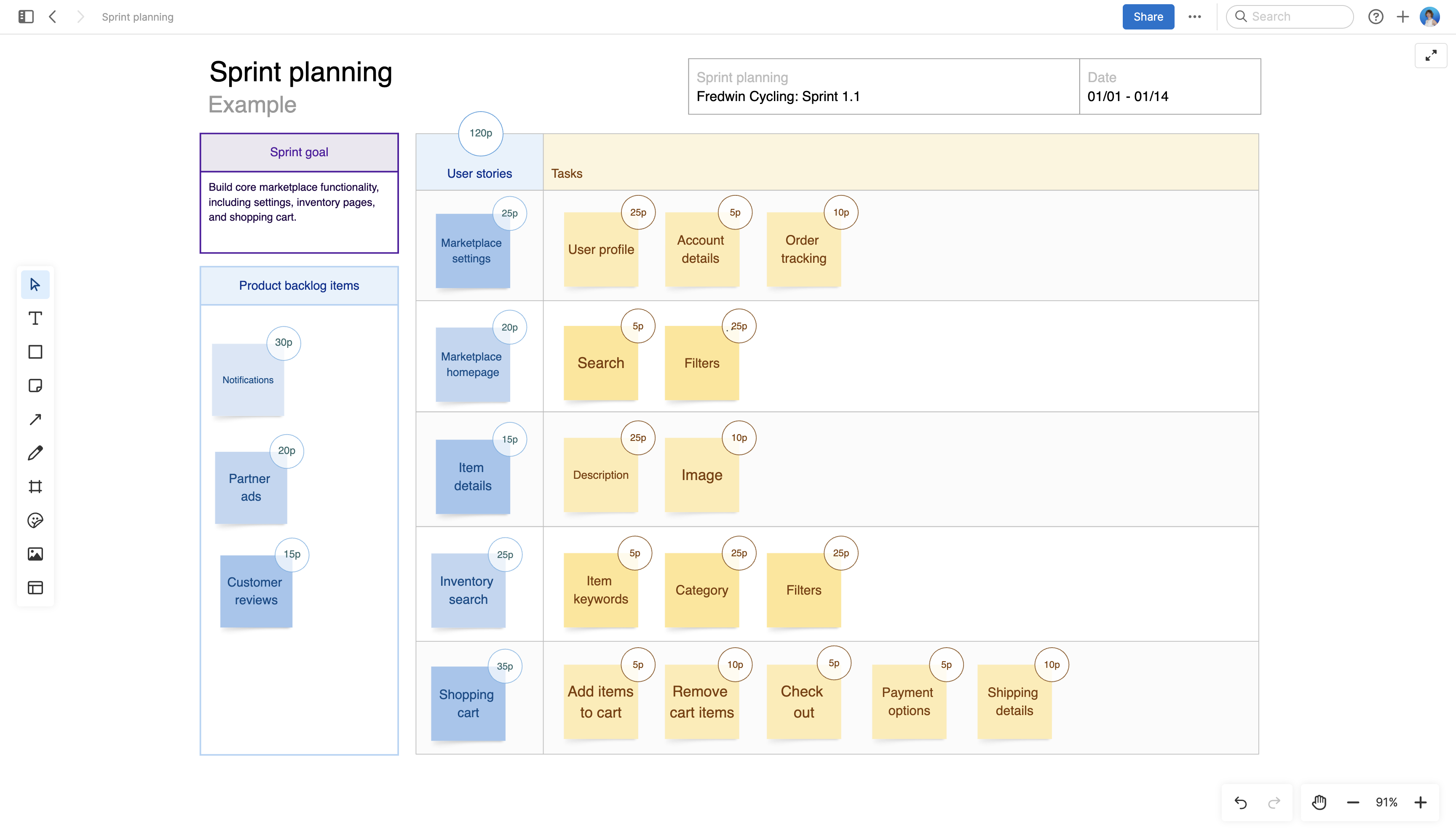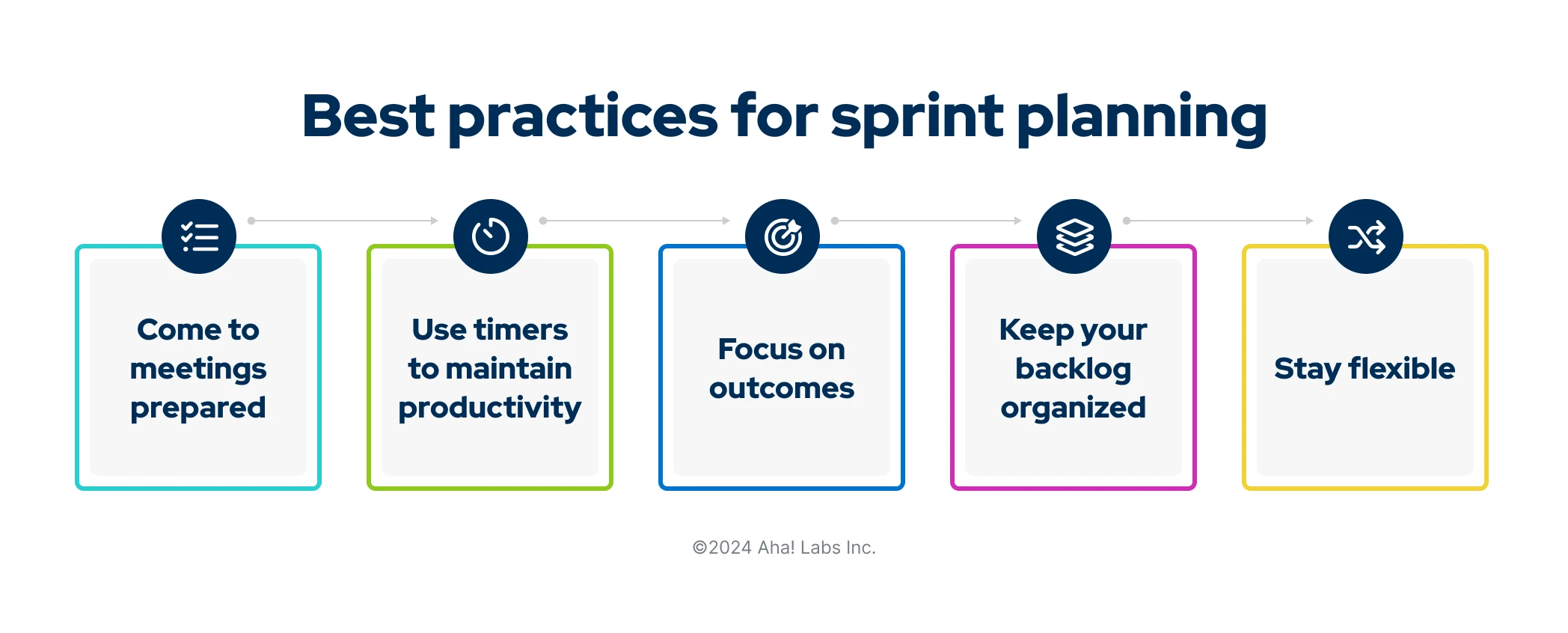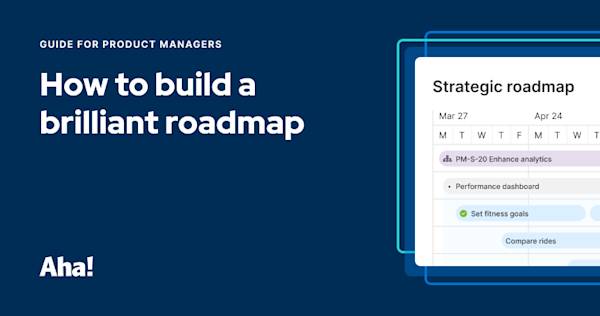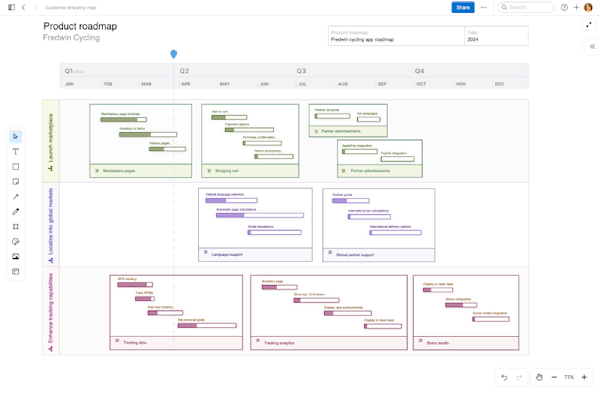What is a sprint planning meeting?
Last updated: April 2024
A sprint planning meeting is a working session meant to help development teams decide on which backlog items to prioritize during the next sprint. Attendees include the scrum master, product manager, and members of the scrum team. Together, they work to set sprint goals, determine how work will be completed, and align on next steps.
Scrum teams are self-organizing — meaning you decide who works on what and when the work is done. But how do you accomplish this? To stay aligned and on track to meet goals, scrum teams hold four events related to sprints: sprint planning meetings, daily standups, sprint reviews, and sprint retrospectives.
Naturally, sprint planning comes first in the sequence. This is when the team collectively commits to the batch of work for each sprint, which is typically two to four weeks long. In other words, you determine what you are going to build, test, and release to customers.
The sprint planning whiteboard template in Aha! software can help you align on the body of work you will tackle during your next sprint. And once planning is complete, you can convert elements on the whiteboard into real work items in Aha! Roadmaps.
Try this sprint planning template in Aha! software — start a free trial.

It is important to note that the term "sprint planning" has gained popularity across industries and team functions, so it is not limited to scrum teams. But for the purposes of this guide, we will focus on sprints and sprint planning within the context of scrum development.
Ready to hop in? Use the following links to jump ahead to a specific section:
Quick overview of a sprint planning meeting
Before we dig into details and best practices, let's level-set on the basics of a sprint planning meeting:
What is the objective of sprint planning meetings? | To align on a sprint goal and determine which items from the backlog will be included in the sprint |
What are the key agenda items? | Designating a sprint goal, discussing capacity, reviewing the backlog, and assigning work |
Who attends sprint planning? | Product owners, scrum masters, and the development team |
When do sprint planning meetings happen? | At the start of each sprint (and usually every two to four weeks) |
How long are these meetings? | Sprint planning meetings generally last one to two hours for every week of a sprint. For instance, if your sprint is two weeks long, the sprint planning meeting should take no more than four hours. |
Related:
The value of sprint planning meetings
Sprint planning meetings involve more than divvying up work items. They provide a critical opportunity for teams to identify how you will build upon the value of your product — for the business and customers. Planning meetings help you maintain the following:
Strategic alignment: Ensuring that each feature or user story is tied to the product's vision, goals, and roadmap
Upkeep of artifacts: Deciding which items from the product backlog to prioritize during the sprint and moving them to the sprint backlog (to create a finalized list of work to complete). This list restates the sprint goal and includes a detailed plan for how to accomplish the work.
Team accountability and morale: Coordinating on dependencies, scope, and ownership and encouraging team members to drive success together
Related:
Who should attend a sprint planning meeting?
Everyone on the scrum team should attend sprint planning — as each role has specific responsibilities during the meeting. Here is a quick breakdown::
Role | Sprint planning responsibilities |
| |
| |
Development team |
|
Related:
How to run a sprint planning meeting
Although each team will settle on a preferred meeting format, there are certain tasks you need to complete each time you meet for sprint planning. If you are new to this process or if your meetings simply need a refresh, consider using this outline to help you create the agenda for your next meeting:
Align on a sprint goal: The sprint goal expresses your overarching objective for the upcoming sprint and should be tied to the value the work will bring end users.
Discuss important updates that might impact the sprint: The product owner shares updates from the leadership team, any changes to the product roadmap, and other details that might require the development team to adjust plans.
Refresh sprint velocity: Keep velocity in mind as you plan. It is the measurement of how much work the team can complete during a sprint — calculated by adding up the total story points (or hours) for all completed user stories during a given time frame. Take the average value for the last three to six sprints to come up with a fairly reasonable sprint velocity.
Discuss team capacity: Does the team foresee any changes in schedule or resources over the next sprint? Do you have other responsibilities or meetings that will consume your working hours? Being open about capacity will result in a more manageable workload.
Review definition of done (DoD) and acceptance criteria: The product owner reviews the team's DoD and acceptance criteria to establish how the team will determine when work is ready to ship.
Review the product backlog: The product owner presents an organized backlog so the team can review potential work items.
Decide who will work on what: Team members work together to assign work and ask critical questions before work begins.
Record concerns and dependencies: Although it is usually outside the scope of sprint planning meetings to fully address all concerns, it is important to record issues to address later. Tracking dependencies can help you flag potential bottlenecks ahead of time so work can progress smoothly.
Confirm consensus: To end the meeting, the scrum master verifies that everyone is in agreement on the sprint goal, the team's commitments, and how you will complete the work.
Related:
Sprint planning best practices
Sprint planning meetings provide a meaningful connection point and alignment for your team. But it can be easy to slip into a stale routine — simply going through the motions of assigning out work. Keep the following best practices in mind to make the most of your sprint planning sessions:

Come prepared: For product owners, this means reviewing past sprints and stakeholder feedback ahead of time and organizing the product backlog so it is ready for the team to use during the meeting. Your development team should also come prepared to surface any concerns, scheduling conflicts, and capacity issues.
Set a timer: This is a time-boxed event, so stay focused. A fixed agenda and stop time encourage folks to move swiftly and not become sidetracked by discussions beyond the scope of the meeting. Devote no more than two hours for each week of your sprint — so four hours maximum for a two-week sprint. Many teams prefer to limit themselves to one hour per week of sprint.
Focus on outcomes: Be clear on what success looks like and how you will measure it. Outcomes can include your planned-to-done ratio of work, deployment quality, and even team happiness. Anything that is a key indicator of the team's success works here.
Plan ahead: Make sure your backlog is organized so team members know what to work on next if they deliver on sprint goals early.
But do not overplan: Sprint planning is about getting clear on goals and outcomes and making sure the development team has what it needs to begin working. You need to balance planning far enough ahead with leaving room for adjustments based on your learnings throughout. Part of being on an agile team is responding to changing circumstances without losing momentum.
The best sprint planning meetings blend strategic alignment with tactical planning. They are times for development teams to not only assign work, but also come together around a shared vision for what the work means and how it will impact the business and your customers. When sprint planning is done well, team members leave the meeting feeling motivated and excited about the work ahead.
FAQs about sprint planning meetings
What techniques can help prioritize the backlog before sprint planning?
Keep critical stakeholder feedback (from customers, leadership, and cross-functional team members) at the center of your sprint planning. These insights can help define what belongs in your backlog and arrange work in priority order. Holding a backlog refinement meeting can help familiarize everyone with this process and keep it streamlined going forward. For more information, check out this guide. It explores product backlogs more in depth.
What strategies can I use to keep sprint planning meetings engaging and productive?
For effective sprint planning meetings, prioritize a concise agenda that covers past achievements, current goals, team capacity, backlogged items, and action points. Boost focus with help from timers, encourage collaboration in real time with whiteboarding software, and motivate the team by recognizing outstanding contributors.
How do we adjust our sprint planning if previous sprints were not completed successfully?
Sprints are all about incremental improvement and doing better the next time around. The best place to start is by holding a sprint retrospective with the team. Use the time to discuss what went well, areas for improvement, and the changes you can make before the next sprint. You can accomplish this quickly using customizable sprint retrospective meeting and whiteboard templates in Aha! software.


